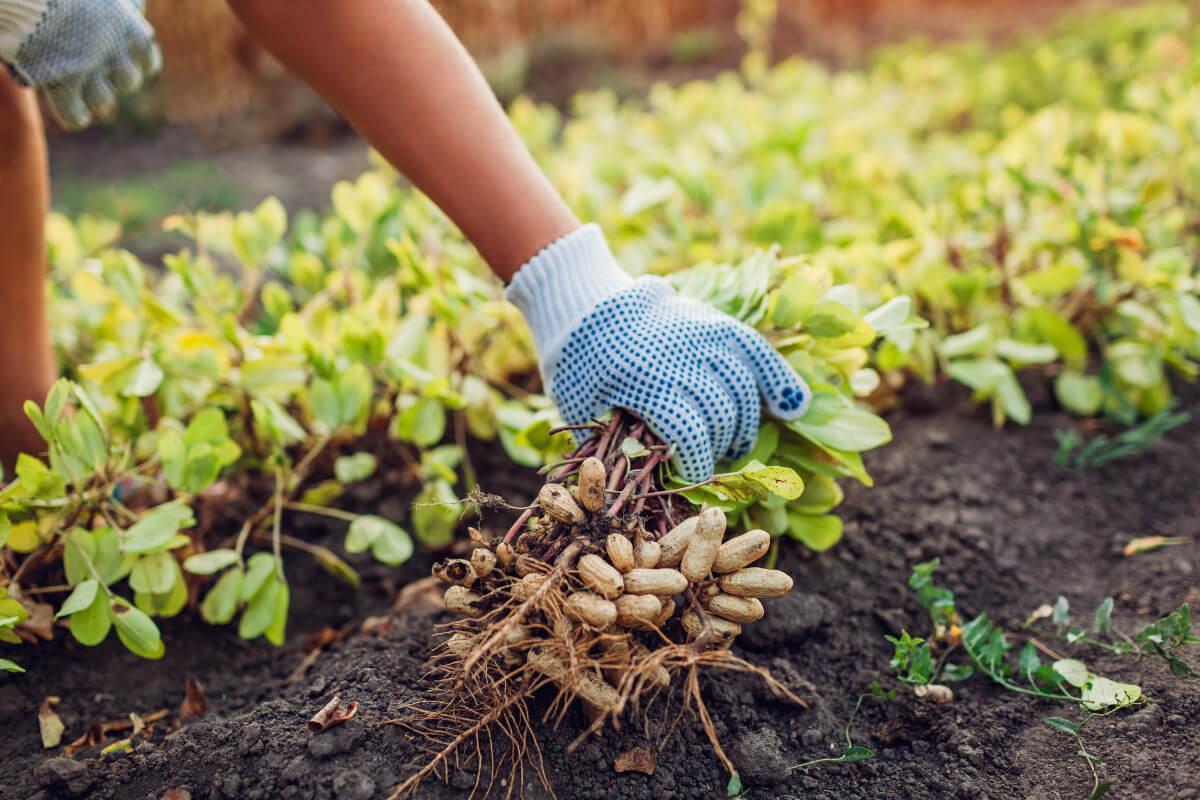Insight Focus
- Peanut production in Brazil increased by 154% between 2014 and 2023.
- Expansion in demand and global prices have been driving up production.
- Peanuts are used in human food, industry, and agriculture.
Respond quickly if you can. Which plant is used for human consumption, in industry and agribusiness? If you answered peanuts, you’re right. Peanuts, originating from South America, are widely consumed throughout the world and have a high content of proteins, vitamins, and minerals.
They also have a thousand and one uses. Peanut bran goes to the animal feed industry and the shell of the grain is used to produce fertilizers. Peanut oil, meanwhile, is included in lotions, soaps, and skin care products.
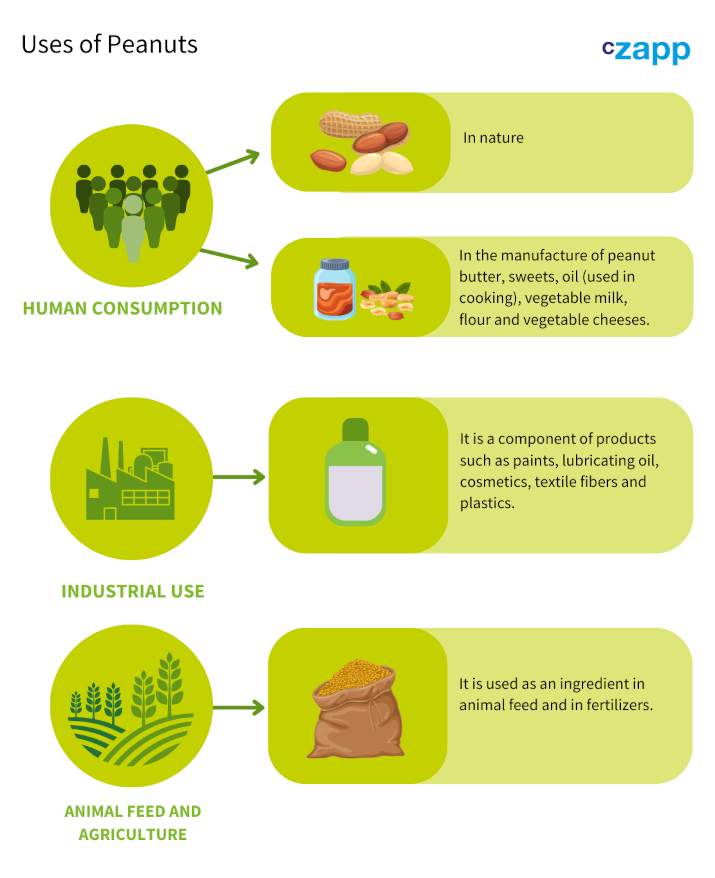
Consumer Trends
Demand for peanuts continues to rise. In China alone, the world’s largest producer and consumer, per capita consumption rose from 7.3 kilos in 2009 to 13 kilos in 2023. Almost all production is for human consumption, with half being transformed into oil for cooking. The increase in per capita income in China, which rose from around RMB 22,000 in 2015 to RMB 36,883 in 2022, according to the Chinese national statistics office, is one of the main factors behind the rise in consumption.
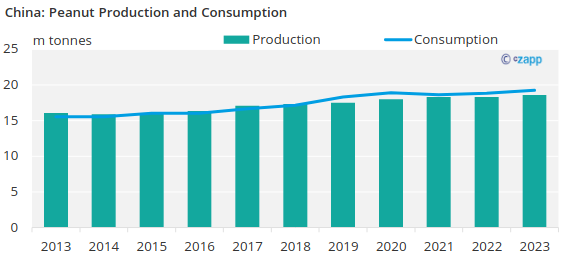
Source: USDA.
The rise of the middle class paved the way for the increase in the acquisition of non-essential and higher value products. In many homes, peanut oil, popular in China, has been replacing lard in cooking. Furthermore, the rise of the middle class has accompanied a trend towards consumer habits more focused on healthy nutrition.
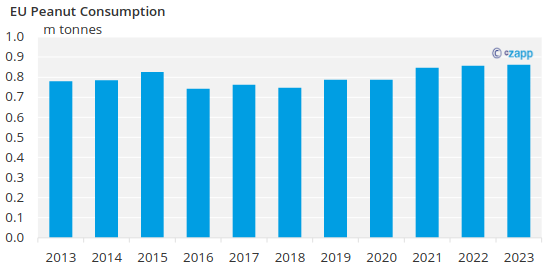
Source: USDA.
In developed countries, peanuts are often consumed as a snack and in high-protein diets.
Production
The increase in demand has increased rural producers’ appetite for the commodity. In 2023, world production reached 50.4 million tonnes, 22% more than in 2015, according to the USDA.
In first place, we have China with almost 19 million tonnes of production in 2023, followed by India with 6.4 million tonnes. And in 10th place, Brazil, though production here is rising quickly.
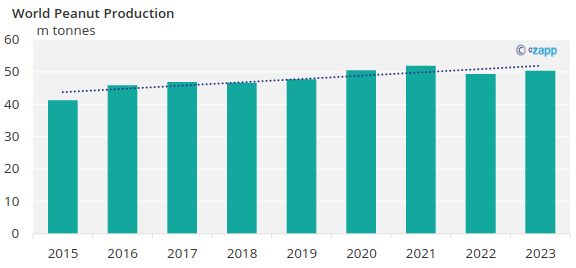
Source: USDA.
But peanut production in Brazil is still concentrated in the state of São Paulo, which accounts for more than 90% of the total volume. Production jumped from around 350 thousand tonnes in 2014 to 890 thousand tonnes in 2023, more than doubling.

Source: CONAB.
And we expect more expansion, with a 10% increase in planted area this year, as a result of the good outlook for prices and international demand. The average price of peanuts in the state of São Paulo is 20% above the same period last year.
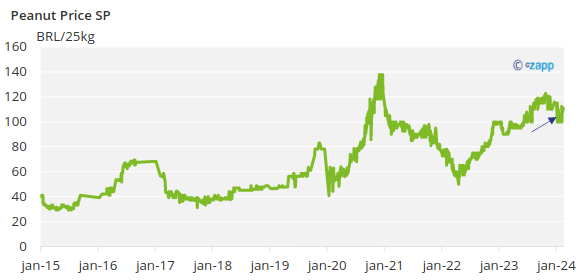
Source: IEA (Instituto de Economia Agrícola).

Exports
This year, Argentina, which usually competes with India for the title of largest exporter in the world, should see an improvement in its harvest with planting benefiting from El Niño – the rains should be favorable for cultivation (the harvest begins in April). There is the challenge, however, of combating a fungus that attacks the crop, peanut smut, which caused losses in production in previous years.
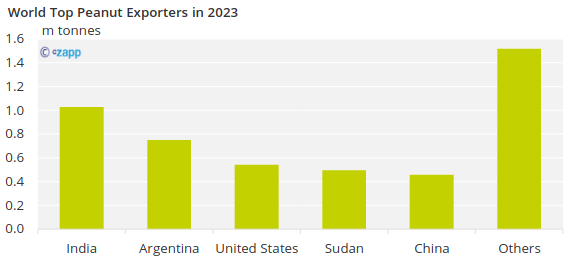
Source: USDA.
India, which exports 1 million tonnes per harvest, has Indonesia and Vietnam as its main markets, representing 30% of the total exported volume.
In Brazil, exports have increased every year. Between 2019 and 2023, the volume exported rose 49%, reaching 307 thousand tonnes – it won’t be long before it enters the top 5. What has helped are improvements in the handling and storage of peanuts, which reduces the risk of contamination by aflatoxin, a substance harmful to human health.
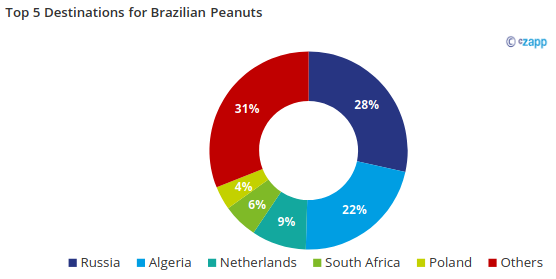
Source: Comex.
Last year, the European Union removed the requirement for official certification and defined a reduction in the control rate for Brazilian peanuts. Technical analyzes and audits carried out throughout 2022 demonstrated an improvement in aflatoxin control, which contributed to the decision of European countries.
These measures are important because Europe represents one of the main destinations for Brazilian exports. The Netherlands is the third largest importer of Brazilian peanuts, after Russia and Algeria. The food arrives at the port of Rotterdam, which represents a large import hub, and from there goes to Germany and other European countries.
